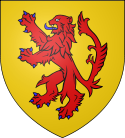- Count of Holland
-
The Counts of Holland ruled over the County of Holland in the Low Countries between the 10th and the 16th century.
Contents
House of Holland
The first count of Holland, Dirk I, was the son or foster-son of Gerolf, Count in Frisia (Dijkstra suggests that Dirk may have been the son of a sister of Gerolf and that his own father died while he was still an infant). He received land around Egmond from Charles the Fat at a place called Bladella (modern day Bladel near Eindhoven, The Netherlands) in 922. This is seen as the beginning of the county of Holland. However, until about 1100, the usual names for the county were West-Friesland, Frisia or Kennemerland; in spite of this the counts from Dirk I onwards are named of Holland.
Note that the chronology of the first few counts is uncertain. The existence of a count between Dirk I and Dirk II was only recently suggested, since it is thought that the references to counts named Dirk between 896 and 988 refer to three, not two, different counts. This third Count Dirk is placed between Dirk and I and II and numbered as Dirk I bis to avoid confusion with the already established numbering referring to the other counts of Holland named Dirk.
- Gerolf (r. 880 – 896)
- Dirk I (r. 896 – 931)
- Dirk I bis (r. 931 – 939), son of Dirk I
- Dirk II (r. 939 – 988), son of Dirk I bis
- Arnulf (r. 988 – 993), son of Dirk II
- Dirk III Hierosolymita (r. 993 – 1039), son of Arnulf I
- Dirk IV (r. 1039–1049), son of Dirk III
- Floris I (r. 1049–1061), brother of Dirk IV
- Gertrude of Saxony (regent), widow of Floris I
- Robert the Frisian (regent), second husband of Gertrude
- Godfrey the Hunchback, Duke of Lower Lorraine (regent)
Name Portrait Birth Marriages Death Dirk V
1061–1091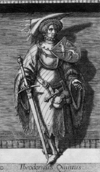
c. 1052
son of Floris I and Gertrude of SaxonyOthelhilde
bef. 26 July 1083
two children17 June 1091
aged 38–39Floris II
the Fat
1091–1121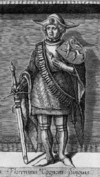
c. 1080
son of Dirk V and OthelhildeGertrude-Petronilla of Lorraine
1113
four children2 March 1121
aged 40–41Dirk VI
1121–1157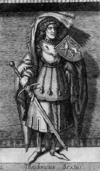
c. 1114
son of Floris II and Gertrude-Petronilla of LorraineSophie of Salm
bef. 1137
nine children5 August 1157
aged 42–43Floris III
1157–1190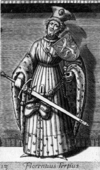
c. 1141
son of Dirk VI and Sophie of SalmAda of Huntingdon
1162, bef. 28 August
eleven children1 August 1190
aged 48–49Dirk VII
1190–1203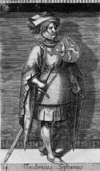
c. ?
son of Floris III and Ada of HuntingdonAdelaide of Cleves
1186
two daughter4 November 1203
Dordrecht
aged ?Ada
1203–1207
with Louis I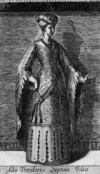
c. 1188
daughter of Dirk VII and Adelaide of ClevesDordrecht
5 November 1203
no issuesc. 1223
aged 34–35Louis I
1203–1207
with Ada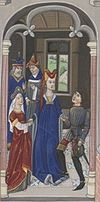
c. ?
son of Gerhard II, Count of Loon and Adelaide of Guelders29/30 Jul 1218
aged ?William I
1203–1222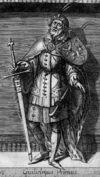
c. 1141
son of Floris III and Ada of Huntingdon(1) Adelaide of Guelders
Stavoren
1197
five children
(2) Marie of Brabant
July 1220
no issues4 February 1222
The Hague
aged 80–81Floris IV
1222–1234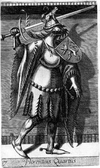
24 June 1210
The Hague
son of William I and Adelaide of GueldersMatilde of Brabant
6 December 1224
five children19 July 1234
Corbie
aged 24William II
1235–1256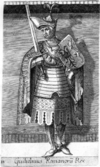
February 1228
son of Floris IV and Matilde of BrabantElisabeth of Brunswick-Lüneburg
Brunswick
25 January 1252
two children128 January 1256
Utrecht
aged 27- William II (r. 1234–1256), King of Germany, son of Floris IV
- Floris de Voogd (r. 1256–1258, regent, as guardian for Floris V), brother of William II
- Floris V the Peasants' God (r. 1256–1296), son of William II
- John III, Lord of Renesse (r. 1296, regent)
- Wolfert I, Lord of Borselen (r. 1296–1299, regent)
- John II, Count of Hainaut (r. 1299 as regent, inherited the county after John I's death, see below)
- John I (r. 1296–1299), son of Floris V
House of Avesnes
When John I died childless, the county was inherited by John II of Avesnes, Count of Hainaut from 1299. John of Avesnes was a son of Adelaide of Holland, sister of William II of Holland.
Name Portrait Birth Marriages Death John II
1299–1304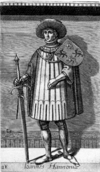
c. 1247
son of John I of Avesnes and Adelaide of HollandPhilippa of Luxembourg
1265
twelve children22 August 1304
aged 56–57William III
1304-1337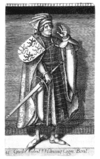
c. 1286
son of John II and Philippa of LuxembourgJoan of Valois
19 May 1305
eight children7 June 1337
aged 50–51William IV
1337-1345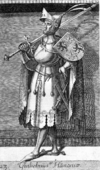
c. 1307
son of William III and Joan of ValoisJoanna, Duchess of Brabant
bef. 27 November 1334
one son26 September 1345
Warns
aged 37–38Margaret I
1345–1354
with Louis
(1345–1354)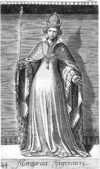
c. 1311
daughter of William III and Joan of ValoisLouis
Cologne
25 February 1324
ten children23 June 1356
Le Quesnoy
aged 44–45House of Wittelsbach
During the rule of Margaret, her son William V had the real power in the county. He became ruler in his own right as a result of the Hook and Cod wars. He was also Duke of Bavaria-Straubing as William I.
- Louis the Bavarian (r. 1345 –1347), Holy Roman Emperor, husband of Margaret
- William V (r. 1354–1388), son of Louis and Margaret
- Albert I (r. 1388–1404), brother of William V
- William VI (r. 1404–1417), son of Albert
- Jacqueline (r. 1417–1432), daughter of William VI
- John III the Pitiless (r. 1417–1425), Duke of Bavaria-Straubing, brother of William VI, rival of Jacqueline
- John IV (House of Leuven) (r. 1418–1427), Duke of Brabant, cousin and husband of Jacqueline
- Humphrey (House of Lancaster) (r. 1422–1425), Duke of Gloucester, husband of Jacqueline
- Francis, Lord of Borselen (r. 1432), husband of Jacqueline
There was a war of succession between John III and Jacqueline. This war was finally won by Philip of Burgundy in 1432, who, in the meantime had inherited John's claims on the county. Philip was a nephew of William VI, who had married a daughter of Philip the Bold of Burgundy. In 1432 he forced Jacqueline to abdicate from Hainaut and Holland on his behalf.
House of Valois
- Philip I the Good (r. 1432-1467), grandson of Albert I
- Charles I the Bold (r. 1467-1477), son of Philip I
- Mary I the Rich (r. 1477-1482), daughter of Charles I
House of Habsburg
- Maximilian (r. 1482-1494, regent), Holy Roman Emperor, husband of Mary I
- Philip II the Handsome (r. 1494-1506), King Philip I of Castile
- Charles II (r. 1515-1555), Holy Roman Emperor Charles V, King of Spain
- Philip III (r. 1555-1581, 1581-1598 titular only), King Philip II of Spain
During the 'foreign rule' by Burgundy and Habsburg, the county was governed by a stadtholder in name of the count. In 1581, the Estates General of the United Provinces declared themselves independent from the Spanish rule of Philip II (who was Philip III of Holland). Until the Treaty of Münster in 1648, the kings of Spain still used the title Count of Holland, but they had lost the actual power over the county to the States of Holland.
- Philip IV (1598–1621, titular only), King Philip III of Spain
- Philip V (1621–1648, titular only, renounced 1648), King Philip IV of Spain
The County of Holland and West Frisia 1582–1795
The County remained in existence as a constituent member state of the Dutch Republic until 1795. There were no more Counts however since the Estates of Holland and West-Frisia were the sovereign of the County (although the countship was offered to William the Silent in 1584, shortly before his death). The Stadtholders, who were servants of the Estates were the de facto Chief-Executives during this period.
References
- B. K. S. Dijkstra, Een stamboom in been, Amsterdam 1991.
- Counts of Holland
See also
External links
 Burgundian Circle (1512–1806) of the Holy Roman EmpireRemained
Burgundian Circle (1512–1806) of the Holy Roman EmpireRemained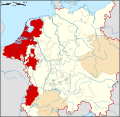
County Imperial City Besançon3Dependent territories Categories:- 922 establishments
- Counts of Holland
- Seventeen Provinces
- Burgundian Circle
- 1071 establishments
- Lists of Dutch nobility
- Lists of nobility of the Holy Roman Empire
Wikimedia Foundation. 2010.

